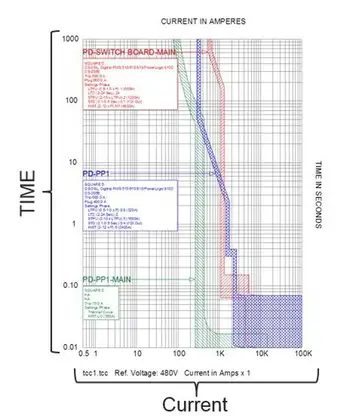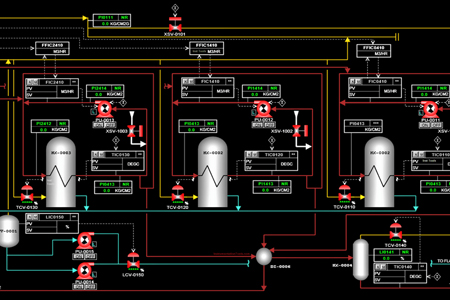Static Var Compensator (SVC) Explained

Short Circuit Study & Protective Device Coordination
Our customized live online or in‑person group training can be delivered to your staff at your location.

- Live Online
- 12 hours Instructor-led
- Group Training Available
Download Our OSHA 3875 Fact Sheet – Electrical PPE for Power Industry Workers

- Follow rules for rubber gloves, arc-rated PPE, and inspection procedures
- Learn employer obligations for testing, certification, and training
- Protect workers from arc flash and electrical shock injuries
A Static Var Compensator (SVC) enhances power system stability by regulating reactive power and voltage. Widely used in transmission networks, it reduces flicker, improves power factor, and supports grid reliability through advanced FACTS technology.
What is a Static Var Compensator?
A Static Var Compensator is a FACTS device that provides fast-acting reactive power compensation in electrical power systems.
✅ Regulates voltage and reactive power flow
✅ Improves grid stability and reduces flicker
✅ Enhances power quality and transmission efficiency
Electrical engineers and maintenance professionals rely on SVCs to address a range of power system challenges, including voltage fluctuations, power factor issues, and transient disturbances. By understanding the principles and applications of SVCs, these professionals can optimize power system performance, reduce operational costs, and enhance overall system reliability. Engineers learning about nominal voltage often extend their studies to reactive power devices such as Static Var Compensators to see how voltage levels are stabilized in practice.
Principle & Components
In modern power systems, ensuring the stability and reliability of electrical networks is a top priority. A key technological solution that addresses this challenge is the Static Var Compensator. As part of flexible AC transmission systems (FACTS), SVCs manage reactive power, enhance voltage regulation, and support system stability in high-voltage transmission networks. Understanding single-phase power is essential before analyzing advanced reactive compensation technologies such as SVCs.
The main components of an SVC include:
-
Thyristor-Controlled Reactors (TCR) – absorb inductive reactive power with smooth adjustment
-
Thyristor-Switched Capacitors (TSC) – inject capacitive reactive power as needed
-
Fixed Capacitors and Capacitor Banks – provide long-term reactive support
(Insert Diagram: TCR/TSC/FC topology)
Voltage Regulation & Power Quality
One of the primary functions of an Static Var Compensator is to regulate voltage. Fluctuations in system voltage can harm efficiency and safety. SVCs dynamically adjust reactive power injection or absorption, preventing dips and spikes, and ensuring consistent power delivery. Tools like the phase angle calculator help illustrate how SVCs regulate voltage and reactive power flow across transmission systems.
FREE EF Electrical Training Catalog
Download our FREE Electrical Training Catalog and explore a full range of expert-led electrical training courses.

- Live online and in-person courses available
- Real-time instruction with Q&A from industry experts
- Flexible scheduling for your convenience
SVCs also improve power quality by:
-
Reducing harmonic distortions
-
Mitigating voltage flicker
-
Correcting an imbalanced power factor
By employing TCR and TSC technologies, SVCs enhance reliability, reduce equipment malfunctions, and cut maintenance costs.
System Stability
Stability is crucial for maintaining an uninterrupted power supply, especially during disturbances or sudden changes in load. The reactive power compensation of Static Var Compensators helps dampen oscillations and improve transient stability. Using thyristor-controlled reactors and capacitor banks, SVCs react quickly and precisely to load variations, reducing the likelihood of blackouts or disruptions. Accurate short circuit current calculation is critical in system planning, and SVCs complement this by providing dynamic reactive support during fault conditions.
Reactive Power Compensation & Energy Efficiency
Static Var Compensators balance active and reactive power flows, minimizing line losses and optimizing transfer capability. By counteracting inductive loads (transformers, motors) with TSCs and capacitors, SVCs:
-
Reduce system losses
-
Increase transmission capacity
-
Improve overall energy efficiency
They also support power factor correction, which reduces energy waste and lowers operating costs, while contributing to environmental sustainability.
Enhanced Transfer Capability
By balancing reactive power across transmission lines, SVCs increase transfer capacity and enable efficient long-distance electricity transport. This helps utilities meet growing energy demands and strengthen grid interconnections.
Power Electronics & Control
Static Var Compensators depend on advanced power electronics. Real-time monitoring algorithms adjust reactive power instantly, while thyristor switches allow rapid voltage control. These fast response times are critical for maintaining stability in modern, dynamic grids.
Applications: Transmission vs. Industry
-
Transmission Networks – Increase transfer capacity, stabilize long-distance power flows, improve interconnection reliability.
-
Industrial Facilities – Steel mills, manufacturing plants, and refineries benefit from voltage stabilization, equipment protection, and improved operational efficiency.
Tech Comparison: Static Var Compensator vs STATCOM
Both Static Var Compensator and STATCOM are FACTS devices for reactive power compensation, but their designs differ:
-
SVC: Uses thyristor-controlled reactors and capacitors
-
STATCOM: Uses voltage source converters for faster response and better harmonic performance
Research shows that SVCs reduce real power loss by 5.20%, while STATCOMs achieve a 5.82% reduction (ResearchGate study).
Comparison of SVC with Other Reactive Power Compensation Technologies
| Technology | Operating Principle | Advantages | Limitations |
|---|---|---|---|
| Static Var Compensator (SVC) | Uses thyristor-controlled reactors (TCR) and thyristor-switched capacitors (TSC) to inject or absorb reactive power. | Proven, cost-effective, fast response, improves voltage stability, reduces flicker. | Slower than STATCOM, generates harmonics, bulky installation. |
| STATCOM (Static Synchronous Compensator) | Voltage Source Converter (VSC) generates reactive power electronically. | Very fast dynamic response, better harmonic performance, operates at low voltages. | Higher cost, complex technology, higher losses than SVC. |
| Shunt Capacitors/Reactors | Fixed devices that provide or absorb reactive power. | Simple, low cost, reliable, widely used. | Cannot respond dynamically, less effective for stability and transient events. |
| Synchronous Condenser | Rotating machine that provides dynamic reactive power through inertia and excitation control. | Provides short-circuit support, improves inertia, stable under severe disturbances. | High maintenance, mechanical losses, expensive compared to static devices. |
Performance Insights & Case Studies
Real-world deployments highlight SVC effectiveness:
-
A Colombian study (MDPI) found a 37.5% reduction in active power losses, a 46.1% drop in reactive power exchange, and 36 GWh annual energy savings with distributed SVCs, achieving payback in 7.4 years.
-
Utilities report higher transmission capacity and reliability when integrating SVCs into high-voltage networks. In power system analysis and design, SVCs are modeled to improve transient stability and minimize transmission losses.
Pros & Cons
Advantages
-
Fast dynamic voltage control
-
Improved grid stability
-
Enhanced power transfer capacity
-
Lower system losses and better efficiency
Disadvantages
-
High installation cost
-
Complex maintenance requirements
-
Slower response vs STATCOM in some cases
Future Trends
Modern developments include:
-
Distributed SVC strategies for better energy savings (MDPI)
-
MEMS-inspired control topologies for higher precision (ScienceDirect, SpringerOpen)
-
Integration with renewables and smart grids, supporting variable generation and dynamic loads
Modern power system engineering integrates SVCs to optimize transmission capacity, enhance reliability, and support the transport of electricity over long distances.
Frequently Asked Questions
What is the principle of SVC?
SVCs maintain voltage stability by absorbing or injecting reactive power via TCRs and TSCs, adjusting in real-time.
What are the pros and cons of SVC?
Pros: improved stability, efficiency, and quality. Cons: high cost and technical complexity.
What is the difference between STATCOM and SVC?
SVC uses thyristor-based components, and STATCOM uses converters. STATCOM is faster but more expensive.
How does an SVC work?
By adjusting thyristor firing angles, SVCs dynamically control reactive power flow, stabilizing voltage and enhancing power quality.
Related Articles







